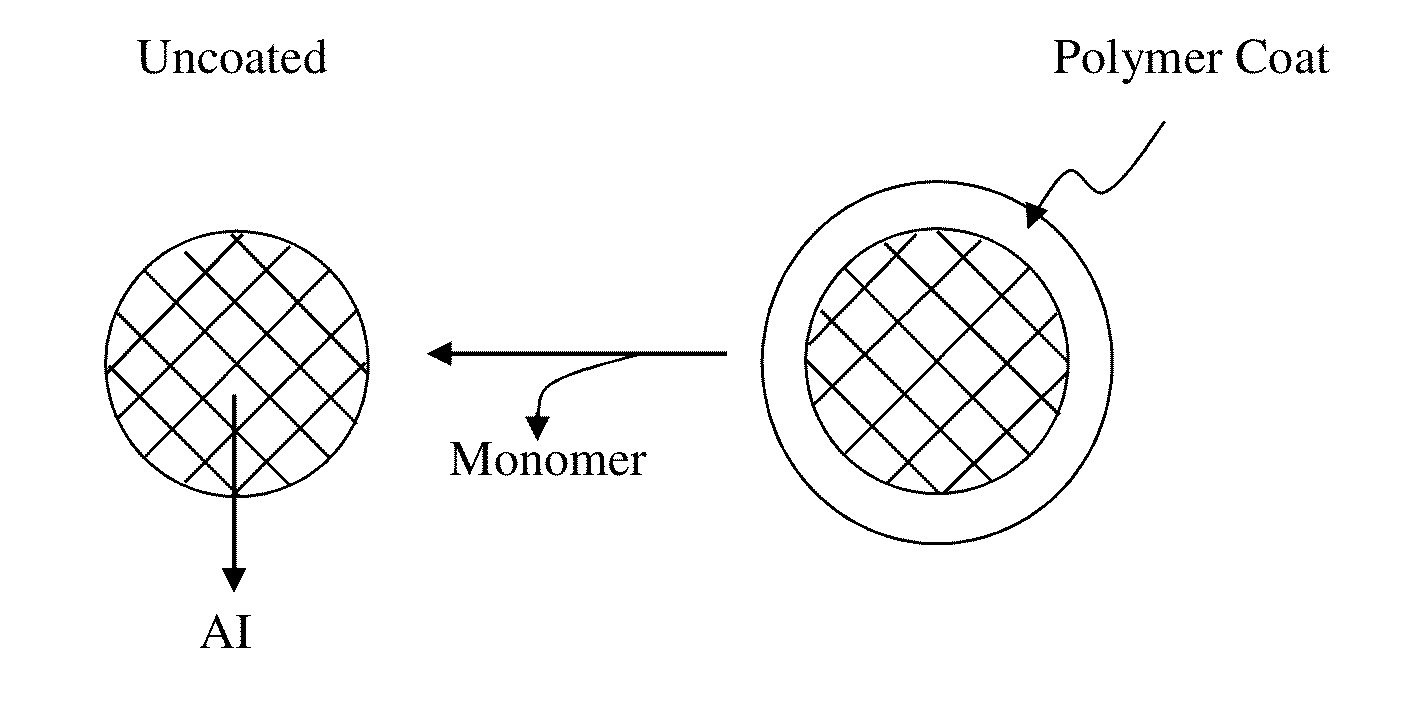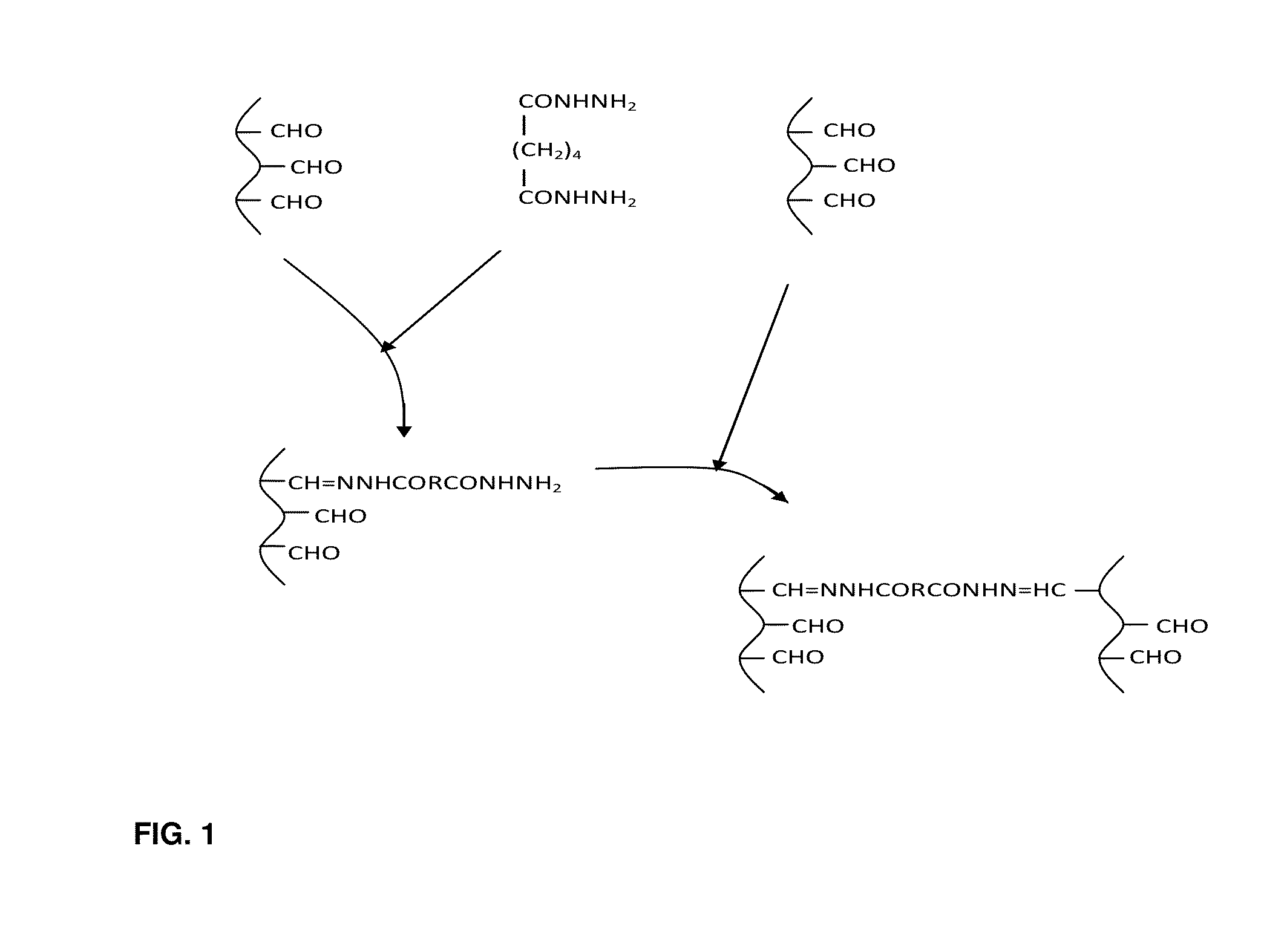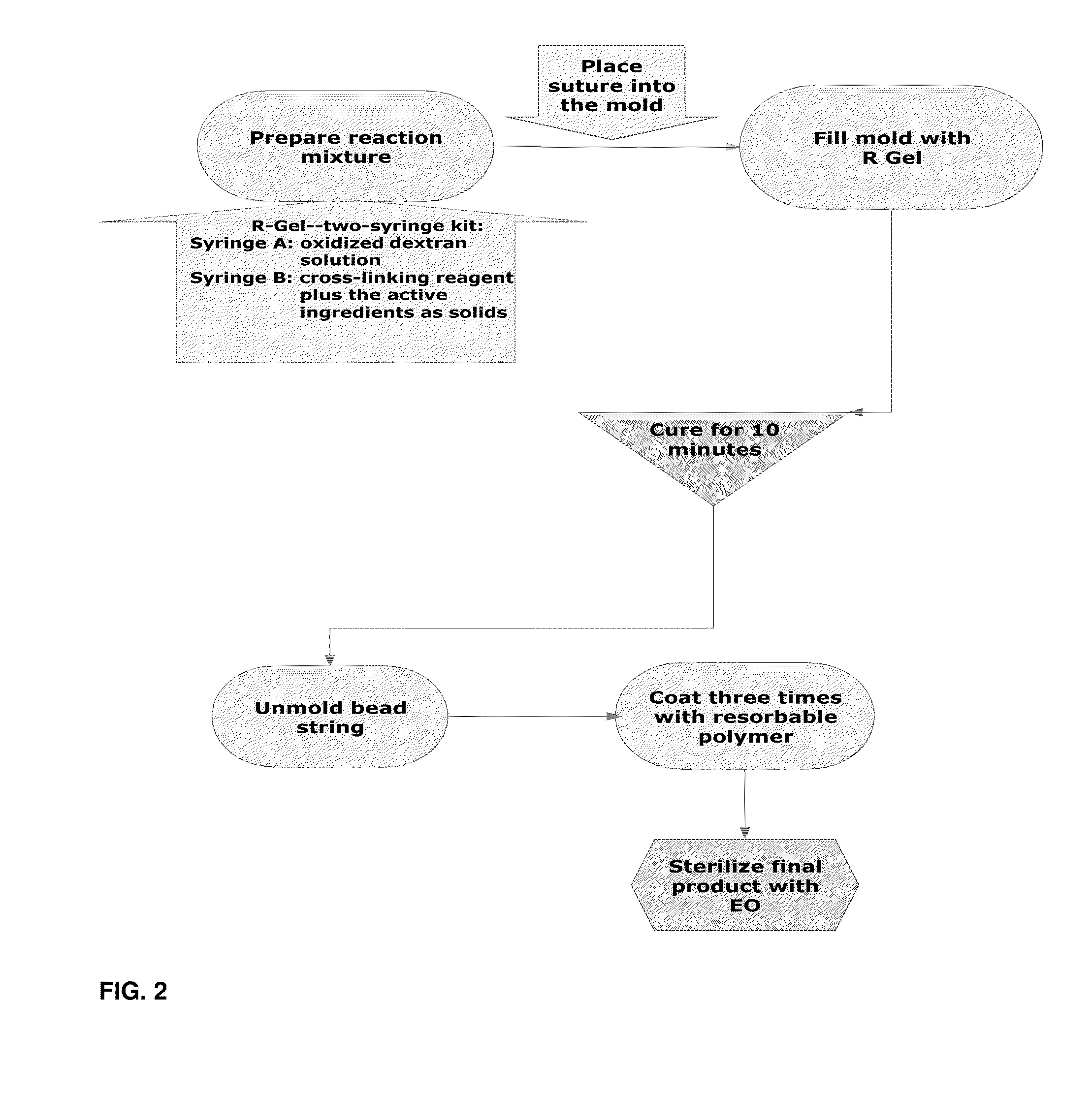Bioresorbable drug delivery matrices based on cross-linked polysaccharides, dosage forms designed for delayed/controlled release
- Summary
- Abstract
- Description
- Claims
- Application Information
AI Technical Summary
Benefits of technology
Problems solved by technology
Method used
Image
Examples
example 1
Release Profile—21 Day Release
[0058]Double syringe system is used in preparation of R Gel 5-FU Spheres. One syringe contains a polymer solution such as oxidized dextran. In the second syringe is a mixture of solid drug and solid dihydrazide. Two component buffer is included to control pH. A diluting agent is also added into the second syringe. The two syringes are coupled and the contents are mixed by reciprocation. Initially, the viscosity is low which permits the product to inject into the mold.
[0059]Various forms of R-Gel 5FU can be produced. One approach is to inject the gel into the mold with spherical or cylindrical cavities. The cavities within the mold are connected by a tunnel. The resorbable surgical suture is placed through the tunnels connecting the cavities in order to create a string of beads. R-Gel is allowed to set up in the mold. Solidification occurs within 2 minutes. The mold is then open and spheres are removed. The compact spheres are coated by dipping (immersio...
example 2
[0063]The dry mixture of 5 FU (150 mg), adipic acid dihydrazide (20 mg), sodium succinate (3.5 mg) and succinic acid (1.5 mg) was placed into a 3 ml syringe (female Luer lock). The syringe with the dry mixture was connected to a second syringe (male Luer lock) containing oxidized dextran solution (Mw 70,000; 150 mg / ml; 1 ml). The contents of both syringes were mixed by reciprocation (about 20 times). Sterile PLGA tubes (internal diameter=1.6 mm) were cut to a length of 1.5 cm. The homogenous suspension (80 μl) was injected into each tube. After curing (10 minutes), the ends of one tube were sealed. The second tube was sealed just from one end. The ends of the third tube were left open.
[0064]The tubes with R-Gel 5FU were transferred into a 5 ml glass vial for the release experiment in 1 ml PBS buffer.
R-Gel 5FUR-Gel 5FUR-Gel 5FUTube IIITube I (unsealed)Tube II (one end sealed)(sealed)% Released / 22.55.80first day
example 3
[0065]Capecitabine (400 mg) was placed into a porcelain mortar and mixed thoroughly along with adipic acid dihydrazide (20 mg) and mixture of sodium succinate (3.5 mg) and succinic acid (1.5 mg). The material was then transferred into a 3 ml syringe (female Luer lock). Oxidized dextran solution (Mw 70,000; 150 mg / ml; 1 ml) was drawn into another syringe (male Luer lock). The syringes were connected and the contents were mixed by reciprocation (about 20 times). Sterile PLGA tubes (internal diameter=1.6 mm) were cut to a length of 1.5 cm. The homogenous suspension (80 μl) was injected into each tube. After curing (10 minutes), the ends of one tube were sealed. The second tube was sealed just from one end. The ends of the third tube were left open.
[0066]The tubes with R-Gel Capecitabine were transferred into a 5 ml glass vial for the release experiment in 1 ml PBS buffer.
PUM
| Property | Measurement | Unit |
|---|---|---|
| pH | aaaaa | aaaaa |
| bioresorbable | aaaaa | aaaaa |
| shape | aaaaa | aaaaa |
Abstract
Description
Claims
Application Information
 Login to View More
Login to View More - R&D
- Intellectual Property
- Life Sciences
- Materials
- Tech Scout
- Unparalleled Data Quality
- Higher Quality Content
- 60% Fewer Hallucinations
Browse by: Latest US Patents, China's latest patents, Technical Efficacy Thesaurus, Application Domain, Technology Topic, Popular Technical Reports.
© 2025 PatSnap. All rights reserved.Legal|Privacy policy|Modern Slavery Act Transparency Statement|Sitemap|About US| Contact US: help@patsnap.com



